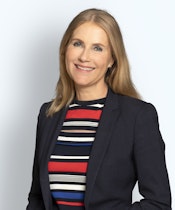Patent protection is often of decisive importance within the life sciences and sector. In Norway, patent matters are governed by the Act on Patents (the Patents Act). The Patent Act governs various aspects related to patents, including the requirements for patentability, the prosecution of patent applications, administrative oppositions, and infringements and invalidity proceedings.
Norway ratified the European Patent Convention (EPC) and became a member of the European Patent Office (EPO) on 1 January 2008. In general, the Norwegian Patent Act is fully consistent with the substantive provisions of the European Patent Convention (EPC). European patents may be validated and thereby become effective in Norway. For European patents that are granted in English, only the claims must be translated into Norwegian for the patent to take effect in Norway.
Pursuant to Section 3 of the Patents Act, a Norwegian patent gives the patent holder the right to prevent others from:
- making, offering, bringing into trade or using a product which is protected by the patent, or importing or being in possession of the product with such intent;
- using or offering to use a process protected by the patent or, if he knows or it is obvious under the circumstances that the process cannot be used without the patent holder’s consent, offering it for use in the country;
- offering, bringing into trade or using a product which is produced by utilization of a patented process, or importing or possessing the product with such intent.
The patent holder can only prohibit others from using the patented product or process for commercial purposes. Strictly private use of a patented product or process for personal use is not prohibited. However, the use does not necessarily have to be for economic purposes to be regarded as use for commercial purposes, meaning that public or non-profit organizations or entities' use may also constitute infringement.
Patent litigation
In an action for infringement, the parties involved are the patent holder (alternatively an licensee) and the alleged infringer. It is common for the alleged infringer to argue as defense that the patent in question is invalid. In order to invoke invalidity as a defense, the alleged infringer must file a counterclaim of invalidity. This allows the court to consider both invalidity and infringement in the same case. This approach is adopted in almost every infringement case.
In recent years, there has been a growing tendency to raise additional grounds of invalidity alongside novelty and inventive step. These additional grounds encompass insufficiency, such as lack of support (commonly referred to as Biogen insufficiency), added matter, and the argument that the technical effect relied on in the assessment of inventive step is not sufficiently supported in the patent application as filed (often referred to as lack of plausibility or credibility).
The procedure of bringing patent action is governed by the Norwegian Civil Procedural Act. To bring action, the plaintiff must first inform the defendant about their intention to start legal proceedings. This includes stating their claims and the legal reasons behind them. The defendant is then given the opportunity to present their counter arguments. If the plaintiff fails to provide this notification, it may affect the court's costs decision.
The case then commences with a writ. The writ is delivered to the defendant along with a specified period of time within which they must respond. Typically, this period is three weeks, but the defendant has the right to request an extension of this deadline.
Norway does not have special patent courts, as is the case in some countries. At the outset, the cases are handled by generalist judges. However, in the Oslo District Court, which is the compulsory first instance venue for patent litigation in Norway, patent cases are distributed to a limited group of judges. This ensures that the judge handling the case typically will be familiar with patent law and have experience with patent cases.
In addition to the legal judge, the court is often strengthened with expert lay judges with technical expertise. Both parties have the right to request that expert lay judges shall be appointed, and the court may decide to appoint expert judges independently of any such request. There is no permanent group or list of expert judges from which the experts are selected, and the court frequently asks the parties to propose suitable candidates.
Preliminary injunctions
Preliminary injunctions can be sought in patent litigation proceedings. Generally, preliminary injunction proceedings in patent cases are conducted as inter partes proceedings, either separately or as part of the main proceedings. To obtain an injunction, the petitioner must provide evidence to support their claim and demonstrate that there is a need for a preliminary injunction. In patent cases, the ongoing infringement or imminent threat of infringement of the patent is typically considered as sufficient basis for granting a preliminary injunction.
The court will reject a petition for a preliminary injunction if the harm or inconvenience to the alleged infringer clearly outweighs the interests of the patentee in obtaining the preliminary injunction. However, it is rare for preliminary injunctions to be rejected on this basis in patent cases. The primary injunction sought in patent cases is usually a prohibition on further use or sale of the infringing goods or process. The court may require the patentee to provide financial security as a condition for granting the preliminary injunction, which is a common practice.
If a preliminary injunction is later overturned on appeal or in subsequent proceedings, the patentee will be held liable for any damages caused to the alleged infringer as a result of the injunction.
Legal costs
The party regarded as having won the proceedings in its “entirety” or “in its essentials”, is entitled to receive reimbursement for legal costs from the losing party. Legal costs include all necessary expenses related to the case, such as fees for legal representation, travel expenses, expert fees, and other essential costs.
Appeal
Decisions, whether preliminary or final, made by the District Court can be challenged by filing an appeal to the Court of Appeal. An appeal can be based on grounds such as errors in the assessment of facts, errors in the application of law, or errors in the procedural aspects of the ruling. The deadline for filing an appeal is one month from the date the decision is served.
Decisions made by the Court of Appeal can be further appealed to the Supreme Court. To file an appeal to the Supreme Court, leave is required. The time limit for filing an appeal is one month. Leave can only be granted if the appeal involves matters of broader significance beyond the current case or if there are compelling reasons for the Supreme Court to adjudicate the matter. In 2023, leave was granted for under 10% of the appeal cases.
The Unified Patent Court
As of 1 June 2023, the European Union’s unitary patent and the establishment of the Unified Patent Court (UPC) have come into effect. Norway is not a participant in this system, meaning that the UPC does not have jurisdiction over Norwegian patents. Instead, validity and infringement proceedings concerning Norwegian patents must be brought before Norwegian courts.
Despite this, it is important for Norwegian businesses and foreign companies operating in Norway to understand the potential impact of the UPC. In essence, such businesses should carefully assess the implications on their patent-related activities, enforcement strategies, and legal defenses within the European context. To read more about the implications, please click here.
Our team
In Thommessen, we have extensive experience with patent litigation within the field of life sciences. Our team has a deep understanding of the complexities involved in patent disputes and has successfully handled multi-jurisdictional cases. Read more about our expertise within intellectual property law here.
You can read more about civil proceedings in Norway here.

Spotlight
Life Science – the framework for future health innovation
The life sciences industry is a critical driver of health innovation, balancing the challenges of research, development, and regulation. With significant investments and focus on enhancing treatment efficacy, the industry is shaping the future of healthcare. As new technologies and regulatory frameworks evolve, staying ahead of these trends is essential for navigating the opportunities and risks that will define tomorrow's breakthroughs.
Read more







